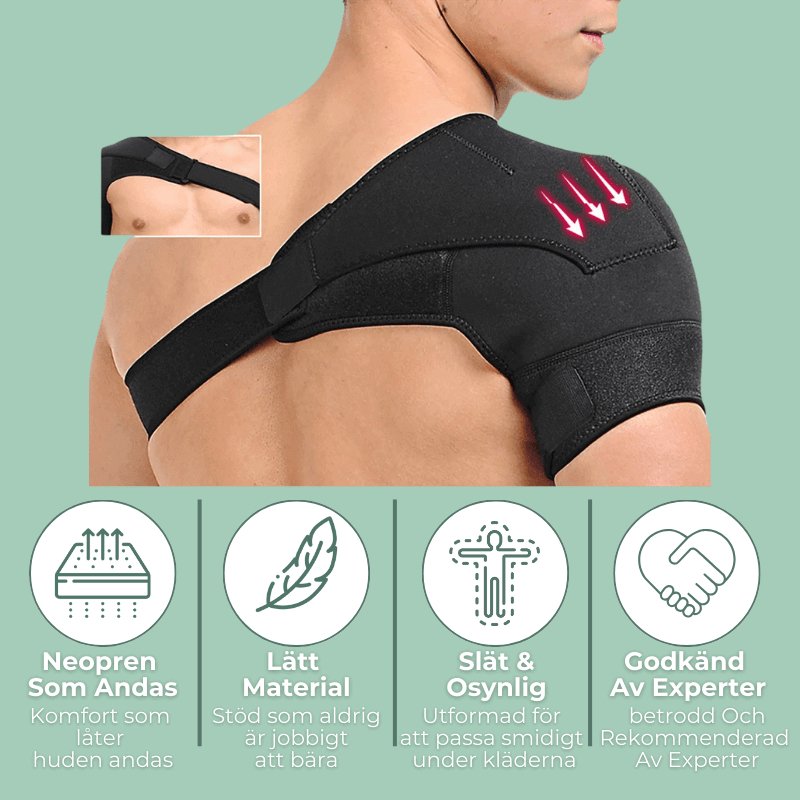Shoulder Osteoarthritis: Symptoms, Causes, and Treatment

Shoulder osteoarthritis is a condition in which the cartilage in the shoulder joint gradually breaks down, which can lead to pain and limited mobility. This article reviews the most common symptoms, causes, and treatment options for shoulder osteoarthritis.
What is shoulder osteoarthritis? Definition and symptoms of shoulder osteoarthritis
Osteoarthritis of the shoulder is a degenerative joint disease where cartilage breaks down, leading to pain, stiffness and reduced mobility. Treatment may include physical therapy, medication and in some cases surgery to relieve the symptoms.
Symptoms of shoulder osteoarthritis: Typical signs of shoulder pain and reduced mobility
Common symptoms include:
- Pain in the shoulder, especially with movement and strain
- Stiffness in the shoulder joint
- Limited range of motion
- Difficulty raising the arm above the head
- Tenderness to the touch
- Crepitations (crackling) in the shoulder
- Nighttime pain
Many patients describe shoulder osteoarthritis as a deep, aching pain that worsens with activity. Pain can radiate from the shoulder down the arm, which is sometimes confused with other conditions. Morning stiffness is common, and many find it difficult to perform everyday activities such as getting dressed or reaching for objects on high shelves. In advanced osteoarthritis, swelling and inflammation can occur in the joint.
Causes of Osteoarthritis in the Shoulder: Risk Factors, Impact on Two Joints, and Contributing Factors
Several factors can contribute to the development of osteoarthritis in the shoulder:
- Age-related changes
- Overload or repetitive strain
- Previous injuries or fractures
- Genetic factors
- Overweight or obesity
Shoulder osteoarthritis occurs when the cartilage that protects the joint surfaces in the shoulder breaks down over time. This can be due to normal aging, but the process can be accelerated by repeated strain or previous injuries. In some cases, infection in the joint can also lead to osteoarthritis. When the cartilage is lost, the bones in the joint begin to rub against each other, causing pain, inflammation, and decreased mobility in the shoulder.
Diagnosis and treatment for osteoarthritis of the shoulder: Rehabilitation, self-care, and other treatment methods
| Behandlingsmetod | Beskrivning | Fördelar med AxelKomforten™ |
|---|---|---|
| Träning och fysioterapi | Övningar för att stärka och öka rörligheten | Stödjer under övningar |
| Smärtlindring | Antiinflammatoriska läkemedel vid behov | Kan minska behovet av medicin |
| Livsstilsförändringar | Viktminskning och anpassade aktiviteter | Stödjer förbättrad hållning |
| Kortisoninjektioner | Vid svåra fall | Kompletterar medicinsk behandling |

How AxelKomforten™ can help with shoulder osteoarthritis: Support for shoulder function and relief of shoulder pain
Shoulder Comfort™ offers several benefits for people with osteoarthritis in the shoulder:
- Provides support and relief to the affected shoulder
- Helps reduce pain and inflammation
- Improves posture and reduces the risk of overload
- Can be used during training and daily activities
- Contributes to increased comfort and improved function
For people with osteoarthritis of the shoulder who experience arm pain, AxelKomforten™ can provide valuable relief by stabilizing the shoulder joint. The product is particularly useful during activities that can aggravate symptoms, and can help the patient remain active despite their diagnosis. When the shoulder is properly supported, the load can be reduced, which often results in reduced pain and improved function in everyday life.
Buy nowConclusion: Manage shoulder osteoarthritis with proper rehabilitation, self-care and, if necessary, sick leave
Shoulder osteoarthritis can be painful and limiting, but with the right treatment and support, many people can experience significant improvements. By combining exercise, lifestyle changes, and the use of supportive devices like the Shoulder Comfort™, many people can effectively manage their symptoms and improve shoulder function. It is important to consult a doctor or physical therapist for an individualized treatment plan.
Although osteoarthritis of the shoulder is a chronic condition, it does not have to be dangerous or lead to serious complications. With proper management, most people can continue an active life with minimal discomfort. In more severe cases, surgery may be considered, but most patients can manage the condition well with conservative methods and aids. Learn more about specific exercises and self-care advice to complement your treatment.
Frequently Asked Questions (FAQ)
What is osteoarthritis of the shoulder?
Osteoarthritis of the shoulder is a condition in which the cartilage in the shoulder joint gradually breaks down, which can lead to pain and limited mobility.
Can exercise help with osteoarthritis in the shoulder?
Yes, regular exercise and specific exercises are an important part of treatment to improve strength and mobility in the shoulder.
How long does osteoarthritis in the shoulder last?
Osteoarthritis is a chronic disease, but with the right treatment, many people can experience significant improvements and learn to manage their symptoms effectively.
Can AxelKomforten™ replace medical treatment?
AxelKomforten™ is a complement to medical treatment and should be used in consultation with a doctor or physiotherapist.
When should I seek medical attention for osteoarthritis in the shoulder?
Seek medical attention if you experience persistent pain, significant limitation in mobility, or if symptoms affect your daily activities.

